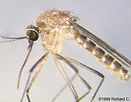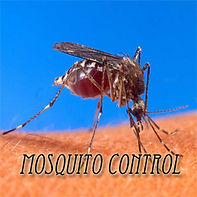
Boaz Pest control
Termite Control
Disinfection Service
PhiIlIippines
Beyond
Pest Control


Make Appointment: 7744-4068
Mobile: 0922-865-5906
Office hours:
8am-5pm Mon-Sun
FDA Licensed to Operate | ISO 9001:2015 Certified | 13 years in the industry
Characteristics
Get a free estimate
There are 279 known species , subspecies and varieties of mosquitoes in the Philippines, but 3 are most widely known due to their medical importance as vectors of deadly diseases : these are Culex sp. ((Filariasis), Anopheles sp. (Malaria) and Aedes sp.(Dengue)There are 279 known species , subspecies and varieties of mosquitoes in the Philippines, but 3 are most widely known due to their medical importance as vectors of deadly diseases : these are Culex sp. ((Filariasis), Anopheles sp. (Malaria) and Aedes sp.(Dengue).
Each of this species goes through four separate and distinct stages of its life cycle and they are as follows: Egg, Larva, pupa, and adult. Each of these stages can be easily recognized by their special appearance.
Egg : Eggs are laid one at a time and they float on the surface of the water. Most eggs hatch into larvae within 48 hours.
Larva : The larva (larvae - plural) live in the water and come to the surface to breathe. They shed their skin four times growing larger after each molting. Most larvae have siphon tubes for breathing and hang from the water surface. On the fourth molt the larva changes into a pupa.
Pupa: The pupal stage is a resting, non-feeding stage. This is the time the mosquito turns into an adult. It takes about two days before the adult is fully developed. When development is complete, the pupal skin splits and the mosquito emerges as an adult.
Adult: The newly emerged adult rests on the surface of the water for a short time to allow itself to dry and all its parts to harden. Also, the wings have to spread out and dry properly before it can fly.
The egg, larvae and pupae stages depend on temperature and species characteristics as to how long it takes for development.
2010 - present
2010 - present
Injury/Damage
Mosquitoes are not just nuisance, they are vectors of deadly diseases such as dengue & Chikungunya, Encephalitis, Malaria and West Nile Virus which has caused serious fatalities worldwide. Climate change aggravates these occurences as mosquitoes' normal feeding behaviour is gradually being altered. This is a threat to human safety where we spend millions of money for research.
Management
Prevention
Sanitation and exclusion through sealing possible entry points are the best ways of preventing mosquito infestation. Aside from these are less costly, they have been proven to be more effective means of keeping mosquitoes away from your property.
Sanitation
-
Suction of water build-up on canals/cistern and STP
-
Regular clean up to mosquito resting sites
-
Removal of water pond on plant pots and plant boxes, rain water deposit, aircon drain and even bath water stocked on drums
Exclusion
-
Cover/seal open areas with water to keep mosquitoes from laying eggs inside

How long does a pest control treatment take?
Pest control treatment takes usually at least an hour and a half but depends on size of the house/property.

What to prepare prior to pest control treatment?
Foods can be kept covered or placed in a big bag (e.g.trash bag). Water containers can be left as is since chemicals used can not penetrate water containers.To be extra careful you can also cover it with plastic. Dispenser nozzle can be enclosed with plastic as well. Clothes need not be packed on plastics unless flies to be controlled are hiding behind clothes. Sofa covers, linens and pillow cases can be washed before re-use. If spraying and misting are to be done, no one should stay inside the area to be treated except the one who will assist in carrying out of the process.

When is it safe to enter a treated area?
It is safest to enter a treated area 2-3 hours after the pest control treatment has been carried out.
BOAZ Pest Control Services MOsquito Control Programs
Four or five-phase Mosquito Control Programs starts on:
1. Inspection and Survey.
2. Sanitation.
3. Exclusion
4. Combination of Non-chemical and Chemical Methods
5. Monitoring
Mosquito Control Program Options
1. Inspection
2. Larviciding
3. Fogging application
4. Misting application








